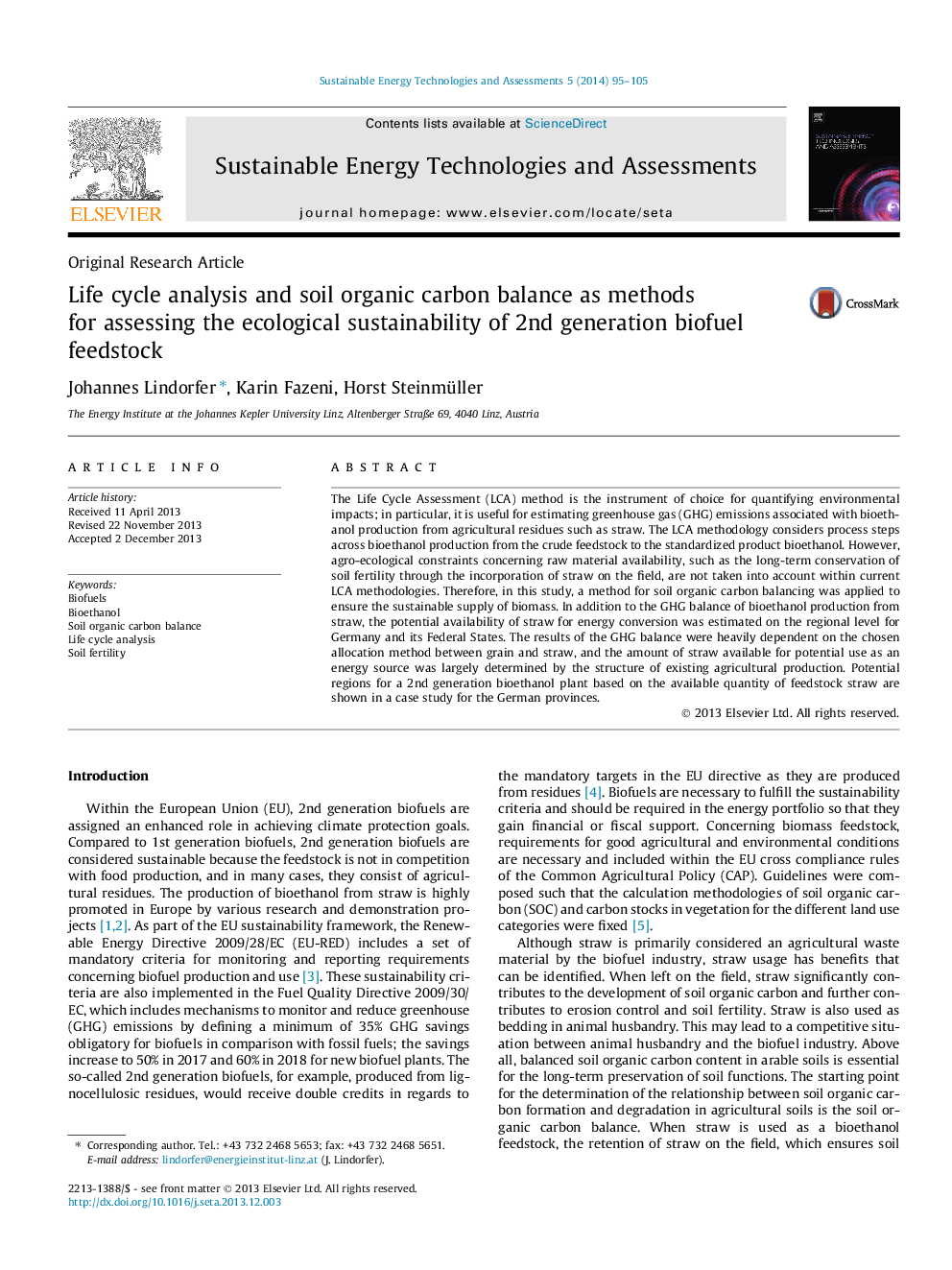| کد مقاله | کد نشریه | سال انتشار | مقاله انگلیسی | نسخه تمام متن |
|---|---|---|---|---|
| 1752737 | 1522405 | 2014 | 11 صفحه PDF | دانلود رایگان |
The Life Cycle Assessment (LCA) method is the instrument of choice for quantifying environmental impacts; in particular, it is useful for estimating greenhouse gas (GHG) emissions associated with bioethanol production from agricultural residues such as straw. The LCA methodology considers process steps across bioethanol production from the crude feedstock to the standardized product bioethanol. However, agro-ecological constraints concerning raw material availability, such as the long-term conservation of soil fertility through the incorporation of straw on the field, are not taken into account within current LCA methodologies. Therefore, in this study, a method for soil organic carbon balancing was applied to ensure the sustainable supply of biomass. In addition to the GHG balance of bioethanol production from straw, the potential availability of straw for energy conversion was estimated on the regional level for Germany and its Federal States. The results of the GHG balance were heavily dependent on the chosen allocation method between grain and straw, and the amount of straw available for potential use as an energy source was largely determined by the structure of existing agricultural production. Potential regions for a 2nd generation bioethanol plant based on the available quantity of feedstock straw are shown in a case study for the German provinces.
Journal: Sustainable Energy Technologies and Assessments - Volume 5, March 2014, Pages 95–105
